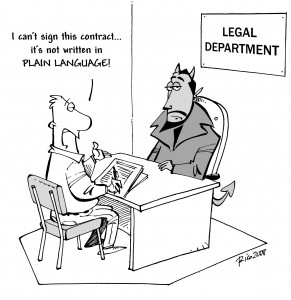Not just small print, terms and conditions must be in plain English. They are a safeguard for your business’s reputation.
With more savvy consumers and the new laws and regulations that protect them, legal content has become key to managing companies’ risks.
To meet legislative requirements, terms and conditions must be written in plain English and must reflect a balance of power between consumers and companies. To meet communications objectives, they must express who you are and how you treat your customers and other stakeholders.
When we tackle legal content, we combine our legal and communications skills. We understand the impact of structure and tone of voice. We are excited about the opportunities posed by new technologies.
Some examples of our projects:
- Training courses for lawyers in law firms and corporations, from candidate attorneys to senior partners
- Style sheets and terminology guidelines for legalisms and other jargon
- Advice on how to replace legalese with plain English – and then how to inject your own tone of voice
- Plain-language contracts and policies in the financial and insurance sectors
- Website terms and conditions that comply with new privacy laws
- Agreements in the retail and technology sectors
Read about how simplified communications can help organisations move from compliance with plain English requirements to customer-centric innovation.

